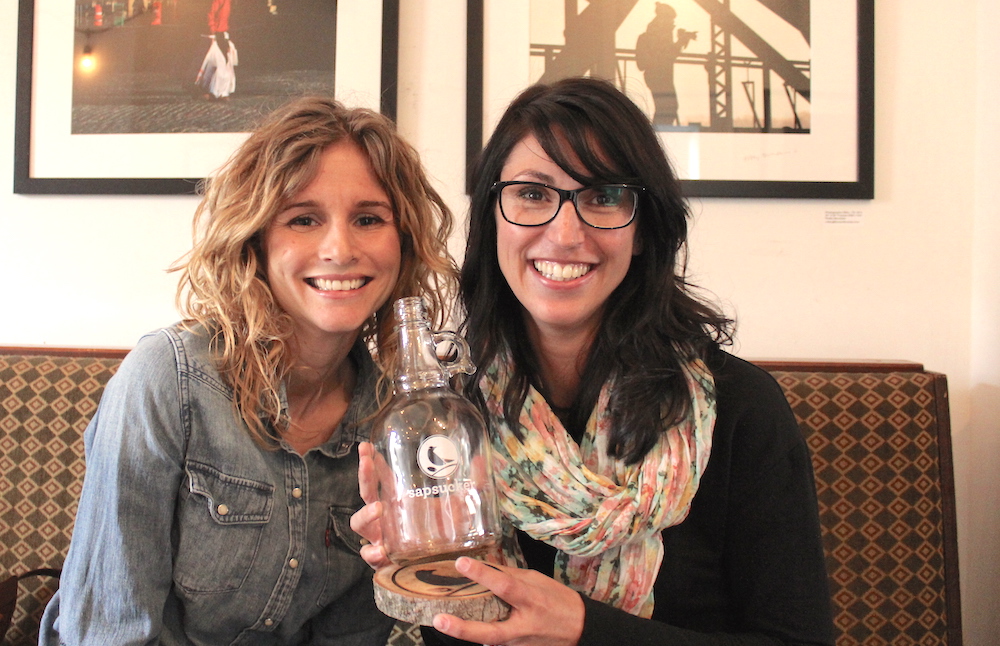
Charlene McGlaughlin and Nancy Chapman show a display bottle for restaurants that offer Sapsucker maple water.
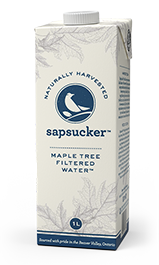 Sapsucker maple water founders Nancy Chapman and Charlene McGlaughlin grew up in the country, but moved to the city to pursue their careers. Still, they and their husbands kept property in and around Beaver Valley in Grey County. Part of the ritual of time spent there was sugaring off, and one of the big treats that came with making maple syrup in the spring was drinking some of the sap, or maple water, before the rest was boiled down.
Sapsucker maple water founders Nancy Chapman and Charlene McGlaughlin grew up in the country, but moved to the city to pursue their careers. Still, they and their husbands kept property in and around Beaver Valley in Grey County. Part of the ritual of time spent there was sugaring off, and one of the big treats that came with making maple syrup in the spring was drinking some of the sap, or maple water, before the rest was boiled down.
Maple water is literally that: water that’s been pulled out of the ground by a tree’s roots and filtered by the wood, which gives it a mild, delicate and slightly sweet maple flavour. Chapman and McGlaughlin thought their might be a market for maple water since there is a growing interest in local and naturally made foods, and because they never met anyone who didn’t like the taste. In the interview below, they tell GFR how Sapsucker came to be Ontario’s first maple water producer.
This interview has been edited for clarity and style.
Good Food Revolution: So your company is the two of you and your respective husbands?
Nancy Chapman: The company is made up of our two families, but Charlene and I run it since our husbands have other jobs.
GFR: So, then you’ve burned your ships at the shore and this is your full time occupation?
Charlene McGlaughlin: We were actually both at home before, we’re mums. We have six kids between us: I have four and Nancy has two.
NC: It was time to get back at it.
GFR: Why sap?
NC: My husband’s family, the Chapmans, have always made maple syrup and drinking the sap out of the tree was always part of that. We always invited the McGlaughlins over when we’re making syrup, and we thought sharing sap water with the rest of the world would be a great idea.
CM: We all tried sap water when we were young and, in fact, I think most schools take their kids out to experience making maple syrup. We loved seeing out kids experiencing it, drinking sap right out of the bucket or in a Mason jar. We thought, you know what, this is about as pure as it gets: this is not made in a lab, it’s made by Mother Nature with one ingredient. How perfect is that?
GFR: So, whose trees are tapping?
NC: We have trees on both of our families’ properties, but even with our substantial acreage we do work with local farmers and purchase some of their sap.
GFR: Is that a thing? Do farmers sell sap?
NC: It’s not a thing. We are actually known as “the girls who buy sap” because it’s new for them to sell it.
GFR: So how would you even know what to pay?
NC: Actually the farmers can easily figure it out because they know the time it takes to boil the sap down into syrup and we save them that time and cost, so they’re happy to take a flat fee. They stay make syrup, but it’s advantageous to them and us to bottle some of the sap.
GFR: Good for everyone, then.
CM: It was about a year ago that we had a discussion and decided this was something that we really wanted to do, and it was a great opportunity to bring our great experience to Canadians everywhere. Here’s a water that is locally harvested, from a renewable source. You can tap the same maple tree for 200 years. We’re not depleting any aquifers. You really can’t get any better than that. And we would have it with supper and say this really goes well with food.
NC: We’re both in the stage of life where we have young kids, and we’re trying to make healthy choices. We’re trying to buy local, and we’re growing vegetables in our garden. The maple water was just a part of that.
GFR: How much sugar is in maple water?
NC: Five grams of sugar, which is very low and is, obviously, naturally occurring.
CM: We don’t do anything to the product. We just harvest it from the tree. It’s one ingredient.
GFR: But you’re not selling it based on health benefits, right?
NC: Malcolm, we want you to drink it because you love it. Because it’s local and harvested naturally and you want a diet where you can trace back to where your food come from. The fact that it’s rich in vitamins and minerals is just a bonus.
CM: We obviously mention it. But it’s not our start.
NC: We love life in Beaver Valley, it’s where were raising our children. We’re the kind of girls who don’t mind getting mud on our boots, and we want to share that lifestyle.
GFR: Why hasn’t someone done this before?
NC: We’ve only been able to package it in the last couple of years with the new tetra-paks.
GFR: So, there was an issue with it going bad?
CM: Yes, five days out of the tree.
NC: We get it out of the tree and into the package within 48 hours, so it’s fresh. This is a bit of an operational challenge. But once it’s in the tetra-paks it’s shelf stable – it doesn’t need to be in the fridge – for 18 months. Drinking maple sap is not a new thing. Every rural family would experience it, but it couldn’t be made available to people in the city because it is such a delicate product.
GFR: So, how do you see it coming to market?
CM: Look for Sapsucker at Whole Foods soon, but right now we’re at local restaurants: The Creemore Kitchen, the Flying Chestnut in Eugenia and the Bicycle, which is in Flesherton. We would like to get into other farm to table restaurants and have the staff come to your table and say, ‘Would you like sparkling, still or maple?”
NC: Our strategy really is to be in farm to table restaurants with Whole Foods as a retail support for that. So, once you’ve experienced it in an idealized location, you can go to Whole Foods to experience it at home. We’re just starting to look for new vendors in Toronto because we only got our product on Friday! I told you it was fresh!
Find out more about Sapsucker maple water at sapsucker.ca.  Malcolm Jolley is a founding editor of Good Food Revolution and Executive Director of Good Food Media, the company that publishes it. Follow him on Twitter or Facebook.
Malcolm Jolley is a founding editor of Good Food Revolution and Executive Director of Good Food Media, the company that publishes it. Follow him on Twitter or Facebook.

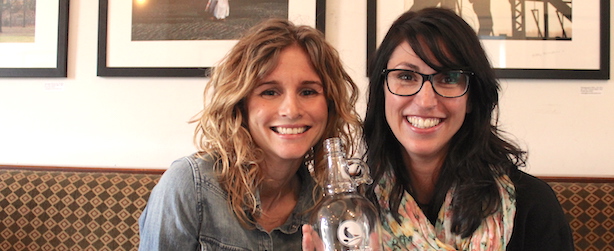


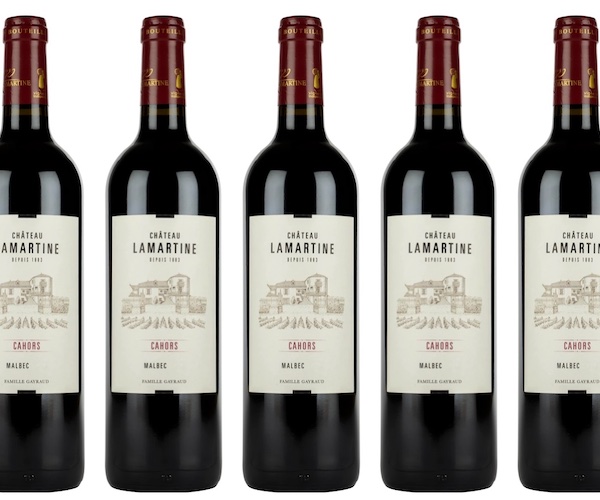
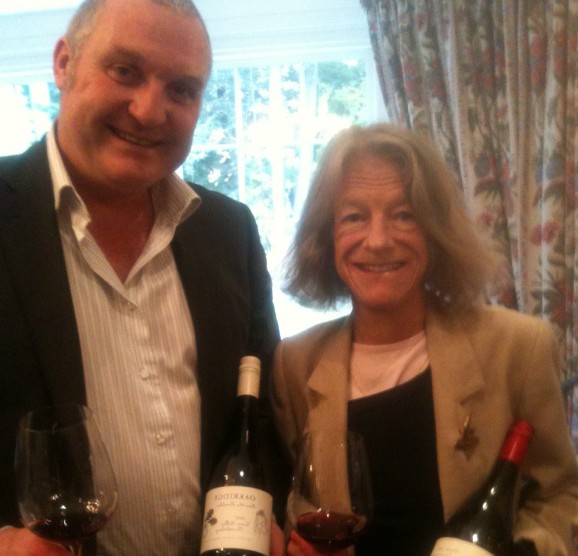
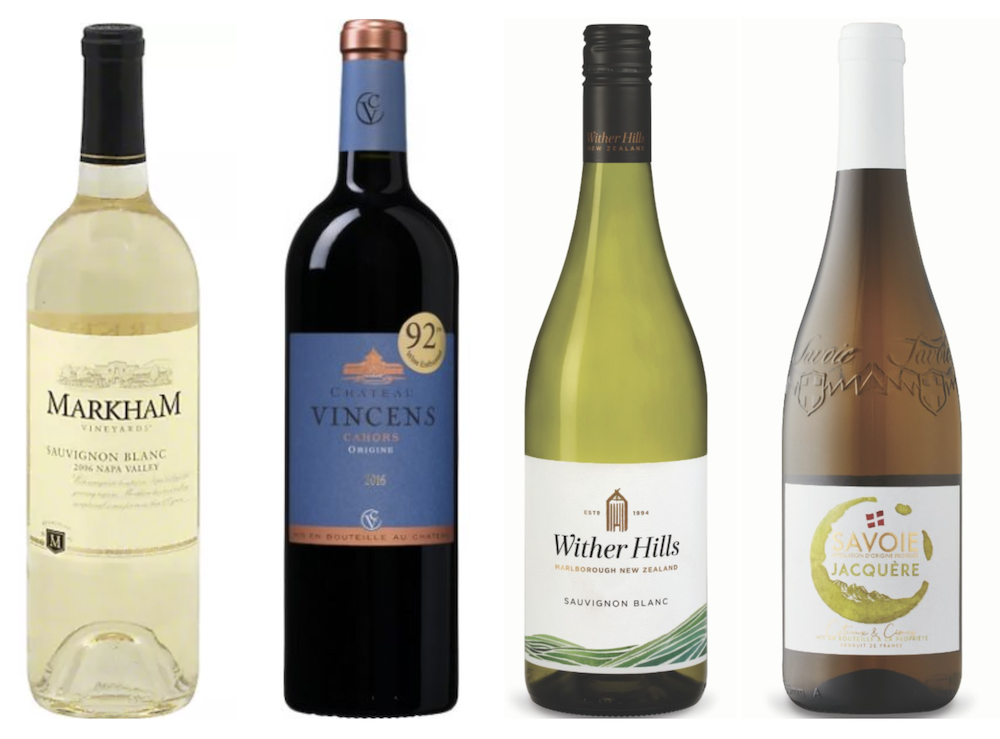

I’ve been selling maple sap for almost 10 years now – real small scale, farmers’ market kinda thing. The popularity (familiarity?) has really exploded in just the past 2 years though. I think I’ve sold more in the past 2 seasons than the previous 8.
Totes agree – great product, great marketability, and why hasn’t anyone done this before?!
Hi Mark, I am very interested to know more about your product. Is it bottled? and is it 18 month of shelf life? Please send me a email so we can discuss more about the maple water business. Thank you!
John
Lots of brands selling it since last year in Canada and the US.
Like coconut water – the packaged stuff is not comparable to the real fresh stuff straight from nature. It’s also very expensive.
Not surprisingly, many are trying to capitalize on it now, in large part due to the success of coconut water.
Hi
My business is called York peer support. I was wondering how to get funding for my project from sap sucker. How do I send you my pitch and business plan?
Hi Tami,
I’m not sure what you mean about funding, but I think your comment is meant for the Sapsucker people. You can reach them through their website at http://sapsucker.ca/#contact-us.
Cheers,
Malcolm